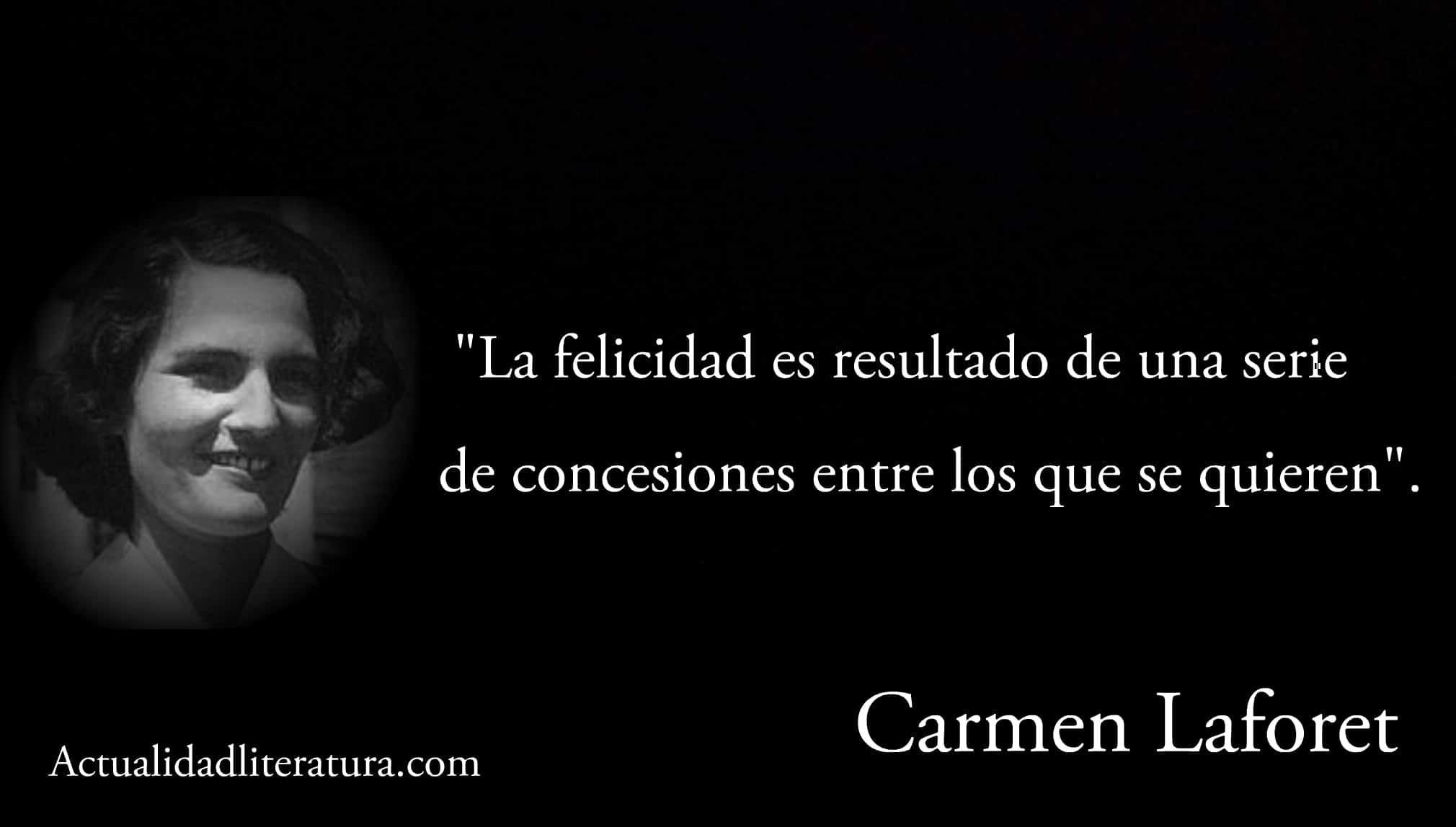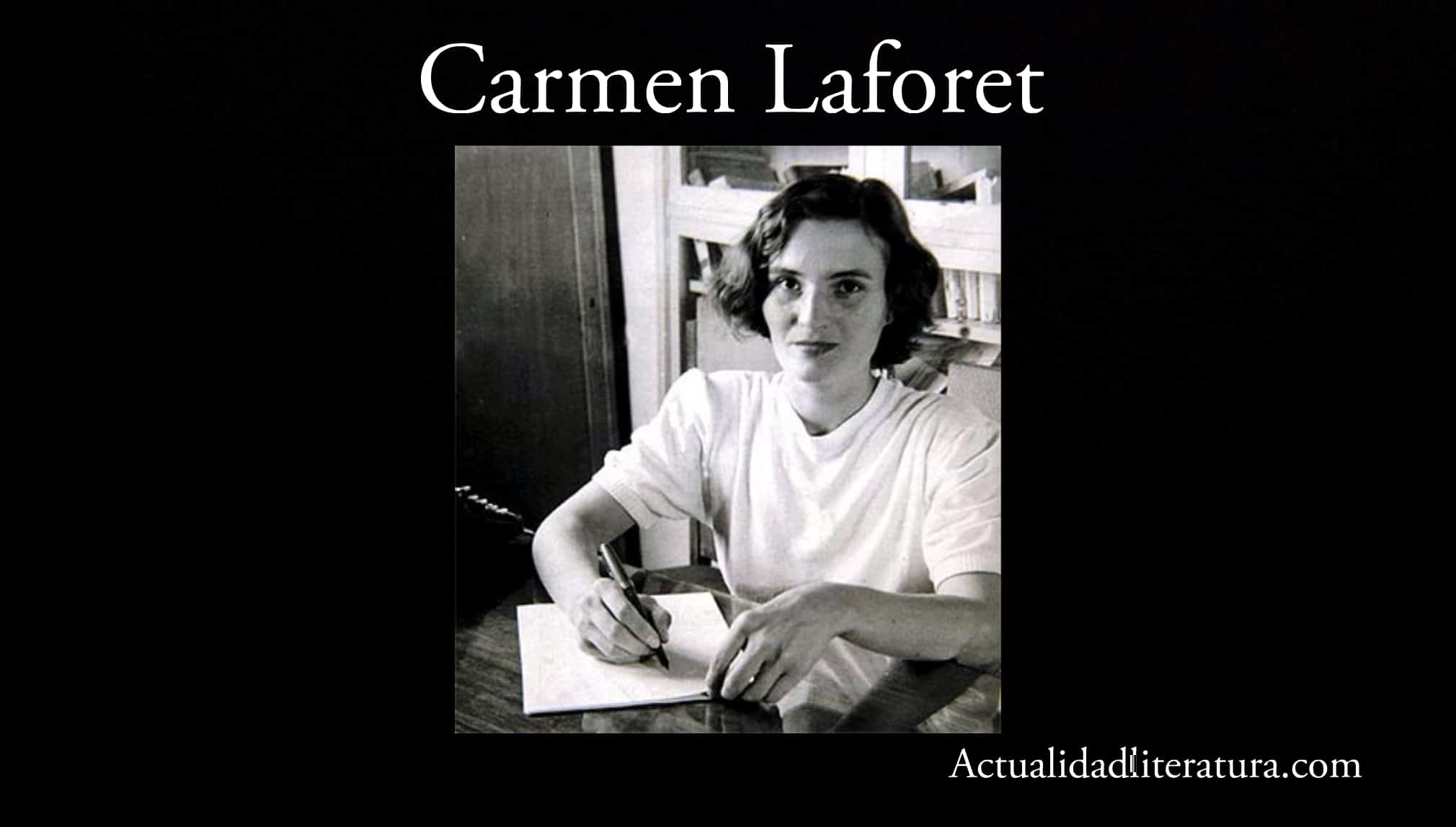
Quote by Carmen Laforet.
Nada (1945) is a novel set in the hometown of its author, Carmen Laforet from Barcelona, during the years after the Civil War. It is a story whose protagonist is a young woman who has just arrived in Barcelona to start her university education. At that time, Catalan society was in the midst of a deep socioeconomic and moral crisis.
That precarious environment is described with crude, direct and unmitigated language by the Iberian writer. For this reason, This novel is very representative of "tremendismo", the narrative style inaugurated by Camilo José Cela with Pascal Duarte's family (1942). Not in vain, Nada It was the winning book of the Nadal and Fastenrath awards the same year it was published.
Summary of Nada
Welcome
Andrea arrives in Barcelona at dawn on a different train than planned in the first instance, therefore, no relative waits for her at the station. The girl is moved by the night view of the city that filled her with hope when she was a child. But her feeling vanishes when she arrives at her new home. There she is received by a confused grandmother and the reproaches of Aunt Angustias for changing trains.
Likewise, the other relatives—Uncle Juan and his wife Gloria, Antonia (the maid) and Uncle Román—look full of bitterness. By the way, the house is dusty, there is no hot water for the bathroom (dirty) and disorder prevails on the divan set up for the young woman. Such chaos is caused by a stack of furniture after the sale of half the house to alleviate economic problems.
An adverse daily life
The traumas of the war are evident in the skin of Barcelona and in the countenance of its citizens. This deepens the disorders of the inhabitants of Andrea's new home, where gossip, discord and frequent discussions (some quite strong) are breathed daily. Only the scrupulous Uncle Román stays out of the intrigue, concentrating on his business and his violin.
Moreover, Angustias is authoritative with the protagonist, although from time to time he shows his affection and protective instinct. Eventually, Andrea understands that she must isolate herself to survive the dementia prevailing in the residence. Therefore, he spends most of his time at the University, which allows him to make new friends. Thus he forms a close bond with Ena and Pons.
Problems get worse
Ena, Jaime's girlfriend, is a girl from a wealthy family; that allows him to treat Andrea to snacks and drinks. This last decides to give him —by way of compensation— a handkerchief that Grandma had given her. That act of kindness brought problems to the protagonist during Christmas dinner with the family (an event full of false joy and tension).
At this point, the protagonist is already aware of Uncle Juan's physical and verbal abuse towards his wife Gloria. Soon after, Aunt Angustias chooses to seclude herself in a convent. Consequently, Andrea feels more unprotected and with a lot of insomnia due to the domestic fights and Roman's irritating parrot. To make matters worse, the girl can only afford her breakfast bread.
Complications and entanglements
Only the outings with Ena and Jaime seem to appease Andrea's hunger and hardship. As the weeks go by, she widens her circle of friends and spends most of her day studying in the university library. In parallel, her relationship with Ena becomes somewhat strange because the latter begins a furtive affair with Uncle Román.
For this reason, the protagonist asks her friend to stop visiting her for a few days. In the meantime, Pons decides to court Andrea, but in the end he does not achieve his goal. In any case, the girl meets some artists who are friends of the boy and the bohemian atmosphere helps her to overcome her adversities.
Decision
Later, Andrea gradually gets to know Ena's mother. Apparently, this lady had a sentimental past with the Román River. Therefore, the protagonist's suspicion grows until Ena reveals her plot: to seduce Roman and then leave him humiliated... That way you can avenge your mother's honor.
In the end, Ena leaves for Madrid after achieving her goal and Román decides to commit suicide with a razor blade. However, in the family home, the mistreated Aunt Gloria is blamed for all the misfortunes that have occurred, including being accused of being the cause of Román's death. In closing, Andrea follows in the footsteps of her friend and says goodbye to her with a promise of work in the capital.
About the author, Carmen Laforet
Birth, childhood and youth

Carmen Laforet.
Carmen Laforet Díaz was born in Barcelona on September 6, 1921. Two years later, she —the eldest daughter of a marriage between a Catalan architect and a teacher from Toledo— She was transferred by her parents to Gran Canaria. His beloved younger brothers, Eduardo and Juan, were born on this island. Unfortunately, the mother died a few years after the last one was born.
For its part, Mr. Laforet did not take long to marry again, but the young Carmen did not maintain a good relationship with her stepmother. This situation was reflected by the writer through the orphanhood of several of its main characters. Such is the case of Andrea (Nada), Maria Way in The island and its demons (1952) and Martin Soto in The insolation (1963)
Literary career and marriage
As soon as the devastating Spanish Civil War ended, Laforet returned to Barcelona with the firm intention of studying Philosophy. However, he did not complete that race nor his law studies, which he began at the Central University of Madrid in 1942. Those dropouts were the prelude to the launch of Nada in 1945, a literary debut acclaimed by critics and readers. As was said, this novel stands out for the narrative style of “tremendismo”, inaugurated by Camilo José Cela with Pascal Duarte's family.
The next year, Carmen Laforet married Manuel Cerezales —journalist and literary critic—, with whom she was married until 1970 and had five children. In this period he published five short novels, three story books and two travel guides (apart from the two successful novels mentioned in the previous section).
Retirement from public life and latest releases
Certainly, the Barcelona author did not have a wide literary production, probably due to the pressure that came with such a resounding and premature success. Also, in the late 1970s, the writer hinted at the first symptoms of Alzheimer's Disease. Consequently, she was seen less and less frequently in public.
It 28 of February 2004, Carmen Laforet died in Majadahonda, Community of Madrid; she was 82 years old. Before her death, the stories “Rosamunda” and “Al Colegio” appeared in Spanish narrative anthologies. tales of this century (1995) and Mothers and daughters (1996), respectively.
Other publications
- literary articles (1977), compilation of all his articles published to date;
- I can count on you (2003), correspondence.
Posthumous publications
- Letter to Don Juan (2007), a book that collects all of Laforet's short stories;
- Romeo AND Juliet (2008), a compilation of all his romantic stories;
- Of heart and soul (1947-1952) (2017), correspondence.
